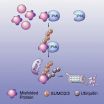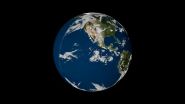(Press-News.org) New research from North Carolina State University pinpoints the areas of the cerebral cortex that are affected in mice with absence epilepsy and shows that transplanting embryonic neural cells into these areas can alleviate symptoms of the disease by reducing seizure activity. The work may help identify the areas of the human brain affected in absence epilepsy and lead to new therapies for sufferers.
Absence epilepsy primarily affects children. These seizures differ from "clonic-tonic" seizures in that they don't cause muscle spasms; rather, patients "zone out" or stare into space for a period of time, with no memory of the episode afterward. Around one-third of patients with absence epilepsy fail to respond to medication, demonstrating the complexity of the disease.
NC State neurobiology professor Troy Ghashghaei and colleagues looked at a genetic mouse model for absence epilepsy to determine what was happening in their brains during these seizures. They found that the seizures were accompanied by hyperactivity in the areas of the brain associated with vision and touch – areas referred to as primary visual and primary somatosensory cortices in the occipital and parietal lobes, respectively.
"There are neurons that excite brain activity, and neurons that inhibit activity," Ghashghaei says. "The inhibitory neurons work by secreting an inhibitory neurotransmitter called gamma-aminobutyric acid, or GABA. The 'GABAergic' interneurons were recently shown by others to be defective in the mice with absence seizures, and we surmised that these malfunctioning neurons might be part of the problem, especially in the visual and somatosensory cortical areas."
Ghashghaei's team took embryonic neural stem cells from a part of the developing brain that generates GABAergic interneurons for the cerebral cortex. They harvested these cells from normal mouse embryos and transplanted them into the occipital cortex of the genetic mice with absence seizures. Absence seizure activity in treated animals decreased dramatically, and the mice gained more weight and survived longer than untreated mice.
"This is a profound and remarkably effective first result, and adds to the recent body of evidence that these transplantation treatments can work in mouse models of epilepsy. But we still don't understand the mechanisms behind what the normal inhibitory cells are doing in areas of the visual cortex of absence epileptic mice," Ghashghaei says. "We know that you can get positive results even when a small number of transplanted neurons actually integrate into the cortex of affected mice, which is very interesting. But we don't know how the transplanted cells are connecting with other cells in the cortex and how they alleviate the absence seizures in the mouse model we employed.
"Our next steps will be to explore these questions. In addition, we are very interested in methods being devised by multiple labs around the world to 'reprogram' cells from transplantation patients to generate normal GABAergic and other types of neurons. Once established, this would eliminate the need for embryonic stem cells for this type of treatment. The ultimate goal is to develop new therapies for humans suffering from various forms of epilepsies, especially those for whom drugs do not work."
The research appears online in Cerebral Cortex. The research was partly funded by the National Institutes of Health. Ghashghaei is leader of the Center for Comparative Medicine and Translational Research's comparative neurobiology core in the College of Veterinary Medicine. Co-authors include post-doctoral fellow Mohamed Hammad (now at the University of Southern California), research associate Xuying Zhang, and veterinary student Ryan Bray who began this work through the Veterinary Scholars Program. Stephen Schmidt and Flavio Frohlich, electrophysiologists at the University of North Carolina at Chapel Hill, made important contributions to the work.
INFORMATION:
Note to editors: Abstract follows.
"Transplantation of GABAergic Interneurons into the Neonatal Primary Visual Cortex Reduces Absence Seizures in Stargazer Mice"
doi:10.1093/cercor/bhu094
Authors: Mohamed Hammad, Xuying Zhang, Ryan Bray, and H. Troy Ghashghaei, North Carolina State University; Stephen L. Schmidt, and Flavio Frohlich, UNC Chapel Hill
Published: Online in Cerebral Cortex
Abstract:
Epilepsies are debilitating neurological disorders characterized by repeated episodes of pathological seizure activity. Absence epilepsy (AE) is a poorly understood type of seizure with an estimated 30% of affected patients failing to respond to antiepileptic drugs. Thus, novel therapies are needed for the treatment of AE. A promising cellbased therapeutic strategy is centered on transplantation of embryonic neural stem cells from the medial ganglionic eminence (MGE), which give rise to gamma-aminobutyric acidergic (GABAergic) interneurons during embyronic development. Here, we used the Stargazer (Stg) mouse model of AE to map affected loci using c-Fos immunohistochemistry, which revealed intense seizure-induce activity in visual and somatosensory cortices. We report that transplantation of MGE cells into the primary visual cortex (V1) of Stg mice significantly reduces AE episodes and lowers mortality. Electrophysiological analysis in acute cortical slices of visual cortex demonstrated that Stg V1 neurons exhibit more pronounced increases in activity in response to a potassium-mediated excitability challenge than wildtypes (WT). The defective network activity in V1 was significantly altered following WT MGE transplantation, associating it with behavioral rescue of seizures in Stgs. Taken together, these findings present MGE grafting in the V1 as a possible clinical approach in the treatment of AE.
Neural transplant reduces absence epilepsy seizures in mice
2014-05-29
ELSE PRESS RELEASES FROM THIS DATE:
Drop in global malnutrition depends on ag productivity, climate change
2014-05-29
WEST LAFAYETTE, Ind. - Global malnutrition could fall 84 percent by the year 2050 as incomes in developing countries grow - but only if agricultural productivity continues to improve and climate change does not severely damage agriculture, Purdue University researchers say.
"The prevalence and severity of global malnutrition could drop significantly by 2050, particularly in the poorest regions of the world," said Thomas Hertel, Distinguished Professor of Agricultural Economics. "But if productivity does not grow, global malnutrition will worsen even if incomes increase. ...
Penn study shows how misfolded proteins are selected for disposal
2014-05-29
PHILADELPHIA – It's almost axiomatic that misfolded proteins compromise how cells normally function and cause debilitating human disease, but how these proteins are detected and degraded within the body is not well understood. Neurodegenerative diseases – including Alzheimer's disease, Parkinson's disease, amyotrophic lateral sclerosis (Lou Gehrig's disease), Huntington's disease, and spinocerebellar ataxias – exact a devastating toll on aging populations throughout the world.
"Yet, there is virtually no cure for any of these diseases, and clinical trials have yielded ...
Tropical Storm Amanda gets bisected and animated by NASA's CloudSat
2014-05-29
VIDEO:
This animation shows how Cloudsat was able to get the image shown.
Click here for more information.
Tropical Storm Amanda continues to weaken in the eastern Pacific from dry air and wind shear. NASA's CloudSat satellite captured a view of the storm from the side revealing heavy precipitation when the storm was the most powerful May Eastern Pacific on record.
NASA's CloudSat satellite flew over Hurricane Amanda in the east Pacific on May 25, 2014 at 2100 UTC (5 p.m. EDT) ...
An ecological risk research agenda for synthetic biology
2014-05-29
Washington — Environmental scientists and synthetic biologists have for the first time developed a set of key research areas to study the potential ecological impacts of synthetic biology, a field that could push beyond incremental changes to create organisms that transcend common evolutionary pathways.
The Synthetic Biology Project at the Wilson Center and the Program on Emerging Technologies at the Massachusetts Institute of Technology convened the interdisciplinary group of scientists and are releasing the report, Creating a Research Agenda for the Ecological Implications ...
Engineering a better way to rebuild bone inside the body
2014-05-29
Traumatic bone injuries such as blast wounds are often so severe that the body can't effectively repair the damage on its own. To aid the recovery, clinicians inject patients with proteins called growth factors. The treatment is costly, requiring large amounts of expensive growth factors. The growth factors also disperse, creating unwanted bone formation in the area around the injury.
A new technology under development at the Georgia Institute of Technology could one day provide more efficient delivery of the bone regenerating growth factors with greater accuracy and ...
Improved identification of war wound infections promises more successful treatment
2014-05-29
War wounds that heal successfully frequently contain different microbial species from those that heal poorly, according to a paper published ahead of print in the Journal of Clinical Microbiology. These and other findings have important implications for improving wound healing, says first author Nicholas Be of Lawrence Livermore National Laboratory, Livermore, California.
The problem the researchers were addressing is that culture-based identification, which has been used to assay war wound infections, misses the many species that are difficult or impossible to culture. ...
Huge tooth fossil shows marine predator had plenty to chew on
2014-05-29
A fossilised tooth belonging to a fearsome marine predator has been recorded as the largest of its kind found in the UK, following its recent discovery.
A team of palaeontologists have verified the tooth, which was found near Chesil Beach in Dorset, as belonging to a prehistoric relative of modern crocodiles known as Dakosaurus maximus.
The tooth, which has a broken tip, is approximately 5.5 cm long.
Researchers and curators from University of Edinburgh and the Natural History Museum in London identified the item after it was bought at an online auction by a fossil ...
Amber discovery indicates Lyme disease is older than human race
2014-05-29
CORVALLIS, Ore. – Lyme disease is a stealthy, often misdiagnosed disease that was only recognized about 40 years ago, but new discoveries of ticks fossilized in amber show that the bacteria which cause it may have been lurking around for 15 million years – long before any humans walked on Earth.
The findings were made by researchers from Oregon State University, who studied 15-20 million-year-old amber from the Dominican Republic that offer the oldest fossil evidence ever found of Borrelia, a type of spirochete-like bacteria that to this day causes Lyme disease. They ...
Remember parathyroid hormone as well as vitamin D to assess vitamin's role in diabetes
2014-05-29
TORONTO -- Combined assessment of parathyroid hormone along with vitamin D may be needed to assess the impact of vitamin D status on sugar metabolism, according to Toronto researchers. Their study is published on-line in Diabetes on May 29 2014.
The new findings might explain why studies of vitamin D alone have been conflicting and why clinical trials of vitamin D supplementation to improve diabetes have been disappointing, says principal investigator Dr. Ravi Retnakaran. He is a clinician-scientist at the Lunenfeld-Tanenbaum Research Institute at Mount Sinai Hospital ...
Grape-enriched diet supports eye health
2014-05-29
FRESNO, CA – New research presented this week at the Association for Research in Vision and Ophthalmology conference in Orlando, Florida suggests that regular grape consumption may play a role in eye health by protecting the retina from deterioration. Specifically, a grape-enriched diet resulted in a protective effect on retinal structure and function.
The retina is the part of the eye that contains the cells that respond to light, known as photoreceptors. There are two types of photoreceptors: rods and cones. Retinal degenerative diseases affect over 5 million people ...





